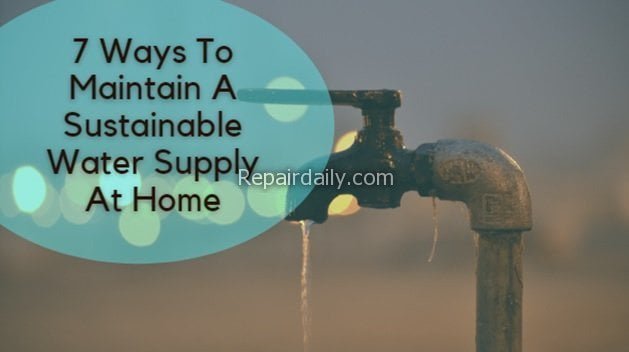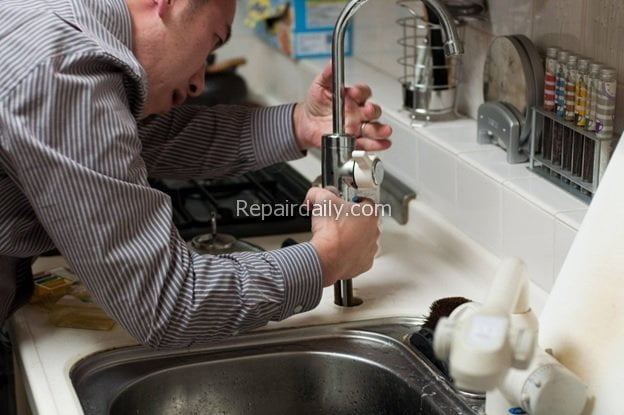

It’s no secret that our planet’s supply of freshwater is limited. In fact, only about 0.5 percent of the global water supply is freshwater, and even more startling up to 90 percent of this freshwater supply is locked away in glaciers and ice caps.
Did you know that 95% of home water usage is dedicated to non-essential activities? Baths, showers, and laundry all require large amounts of water. The good news is that there are small adjustments we can make in our daily lives to reduce this water consumption. This is important because it can save us money in the long run while also helping the environment. We can take steps to stop wasting this precious resource and find ways to conserve it starting in our residence.
Here are seven effective ways to maintain a sustainable water supply at home:
1) Take shorter showers.
When you take shorter showers, you’re following one of the most important rules in water conservation: don’t let it run unnecessarily. According to the EPA, a typical shower lasts for about eight minutes and uses an average of 17 gallons of water. If you cut the time down to five minutes, that’s a savings of 12.5 gallons per shower. That adds up to more than 4,000 gallons of water over a year if you’re taking two showers a day—enough to fill six full-size hot tubs! Making the change is simple: just set a timer in the bathroom and get out when it goes off!
2) Consider water bore drilling.
Many people are unaware of the benefits of water bore drilling. In fact, many residents have never heard of this method and continue to use their municipal supply for all their needs. If you are interested in having a sustainable water supply at home and reducing your impact on the environment, water bore drilling is a great option to explore.
Depending on where you live, water may be abundant or scarce, which is why it’s important to think about the long-term future of water supply in your area. This is especially true if you live in Australia, where droughts are common, and the use of bore water drilling has become more prevalent in recent years. Water bore drilling involves setting up a system to capture and preserve natural water supplies collected from underground sources, and can be a smart choice for homeowners who want to save on their bills and ensure their home never runs out of clean water.
How does water bore drilling work?
The process involves first using a rotary or cable tool to drill down into the ground until an aquifer is reached. This aquifer holds groundwater that can be pumped to the surface. To locate the best place for water bore drilling, your contractor will take soil samples and test them to determine where there are high levels of permeability. A good quality contractor will also test the groundwater they retrieve from their bores and wells before installing a pump, so that they know what kind of equipment and system they should put in place.
3) Collect rainwater for gardening purposes.
Collecting rainwater is a great way to reduce your water bill and help you save money. It’s also a great way to reduce the amount of water that goes to waste each time it rains. Many people are under the false impression that they need special equipment or materials to collect rainwater, but all you really need is a bucket and some sort of cover to keep debris out. You can use the collected rainwater for any number of gardening purposes, including watering plants and irrigating your garden.
4) Insulate water pipes.
Insulating your pipes is another effective step toward efficient water use. Insulation can reduce the amount of water wasted while waiting for hot water to reach the tap. The average household wastes more than 10,000 gallons each year while waiting for hot water, but installing an insulating jacket on the hot-water storage tank cuts standby heat losses by 25%–45% and saves an average of $25 to $45 annually. Insulating hot-water pipes will save even more.
5) Address any plumbing issues promptly.

Water conservation is all about making the most of the water you have. By ensuring that your pipes are in good condition, you can avoid any leaking toilets or faucets that might result in a loss of water. You can also make sure that water is distributed evenly throughout your home, which will prevent any excess usage from occurring. Not only does this prevent lost water (which costs money), but it can also help to avoid more serious problems such as mould and mildew buildup. If you’re not sure how to fix plumbing issues yourself, consider hiring a professional to help. Have a plumber repair any plumbing issues as soon as possible to avoid losing hundreds or thousands of gallons of water.
6) Only run full loads in your dishwasher and washing machine.
By only running your dishwasher and washing machine when you have a full load, you’ll be able to conserve water by not running these appliances as often. That’s because they use the same amount of water regardless of whether they’re full or half full, so it’s more efficient to wait until they’re packed with dishes or clothes before running them. Also, be sure to use the “energy saver” mode on your dishwasher so that it reuses some of the water from the previous rinse cycle.
7) Recycle greywater from sinks, showers and bathtubs.
A great way to conserve water at home is to use recycled water for cleaning. Recycled water can be used for flushing your toilet, washing clothes, and even watering your garden. This can not only help you save money, but also help you save the environment. Also, consider installing a rainwater tank to capture stormwater for use in your home.
Takeaway
Water is an essential part of life. Without a sustainable and clean water supply, humanity won’t survive. This then begs the question, why haven’t we done more to protect this limited resource? We shall all do our part in conserving water!
If you’re trying to have a sustainable water supply at home, whether to save money or the environment, follow the tips above so you can maintain a sustainable water supply at home.
